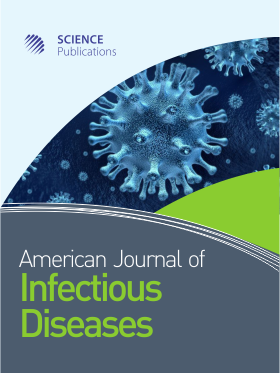Prevalence of Heterogeneous Glycopeptide Intermediate Resistance in Methicillin-Resistant Staphylococcus aureus
- 1 Venus Medicine Research Centre, India
Abstract
Multidrug resistant Methicillin-Resistant Staphylococcus Aureus (MRSA) is a major cause of nosocomial and community acquired infections and is on the rise. The aim of this investigation was to explore the prevalence of MRSA and heterogeneous Glycopeptide Intermediate Staphylococcus Aureus (hGISA) in various clinical samples, to investigate the various antibiotic resistant determinant genes among these strains collected from north and west Indian hospitals and to evaluate the response of various drugs to these strains. A total of 413 clinical specimens collected from different hospitals were processed for the screening of S. aureus and MRSA. All the MRSA strains were further screened for hGISA on Mueller-Hinton agar containing 8 µg mL-1 teicoplanin or 6 µg mL-1 vancomycin. hGISA confirmed by the E-test method with a dense inoculum and a simplified method of population analysis. Susceptibility study was conducted according to the Clinical and Laboratory Standards Institute (CLSI) methods. Among 211/413 S. aureus clinical isolates, 61.6% (130/211) of the isolates were confirmed to be MRSA which included maximum isolates from pus, blood, urine, wound swab and ear swab samples in decreasing order. hGISA strains were found in 8/130 (6.1%) isolates. Vancoplus, a novel antibiotic adjuvant entity was found to be susceptible in 96.1 to 97.8% MRSA strains and showed intermediate response in 2.2 to 3.8% of isolates. Linezolid appeared to be second most active antibiotic with 48.0 to 81.2% susceptibility, followed by teicoplanin (41.3 to 56.2% susceptibility). There was 8.7 to 9.6% resistance observed in Linezolid which was increased to 48% in teicoplanin, to >60% in daptomycin and >75% in vancomycin. Interestingly, none of the isolates were susceptible to ceftriaxone and cefoperazone plus sulbactam. From the above study it can be concluded that prevelance of MRSA has reached a significant level and Vancoplus is the most effective drug in MRSA as well as hGISA organisms in comparison to comparator drugs.
DOI: https://doi.org/10.3844/ajidsp.2013.63.70

- 4,364 Views
- 3,430 Downloads
- 8 Citations
Download
Keywords
- Methicillin-Resistant Staphylococcus Aureus
- Heterogeneous Glycopeptide Intermediate Staphylococcus Aureus
- Vancoplus
